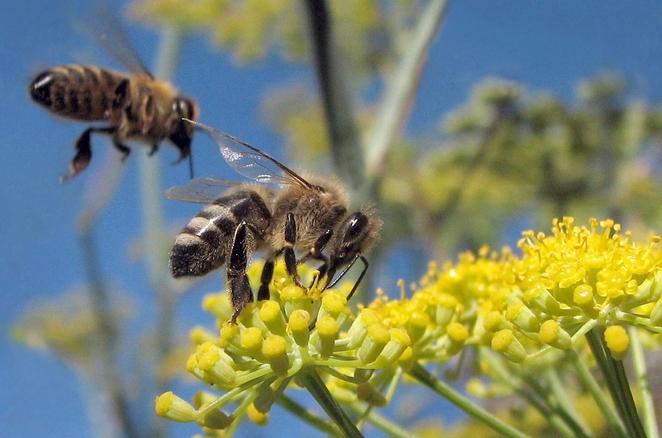I used to live in Carrboro, North Carolina—a town that has a lot going for it in terms of sustainability. (So much so, that it was the chosen image for one of Zach’s posts about car-free living.) But despite my knowledge of its urban farm tours and goat-powered landscaping companies, I wasn’t aware of one important fact:
Carrboro has long had policies in place to nurture and protect pollinators.
From its Least Toxic Integrated Pest Management policy, adopted in 1999, through using native plants in municipal landscaping to purchasing a steam weeder to limit the use of unnecessary chemicals, the town has gone to great lengths to consider environmental health when planning its own landscaping operations. But what happens in a town isn’t just up to the local government. It’s up to the people there too.
That’s why I was excited to hear that Carrboro is becoming an official Bee City USA, the third of its kind in the country. (Asheville, North Carolina and Talent, Oregon, beat Carrboro to it.) Alongside the city’s existing pollinator protection efforts, the Bee City USA plan—which was unanimously approved by the town’s Board of Aldermen—will include promoting the use of native and sustainably grown plants to local residents, raising awareness about sustainable farming practices, and prominently displaying Bee City USA signage on entrances to the town.
As the Bee City USA webpage on becoming a Bee City notes, the potential economic and community benefits are significant. From encouraging micro-enterprises through improving agricultural production to increasing local nursery markets, these bee-friendly efforts could well be a catalyst for some healthy, grassroots economic stimulus too.
And while I might be tempted, at first, to question the value of “prominent signage” to the health of bees. In actuality, however, this might be one of the most important aspects of becoming a Bee City. By encouraging the community to self-identify as leaders in bee protection, it leverages civic pride, marketing and a generous dose of peer pressure to encourage everyone to do their part, both for bees and for the local community.
Via Treehugger
Photo courtesy Wolfpix
